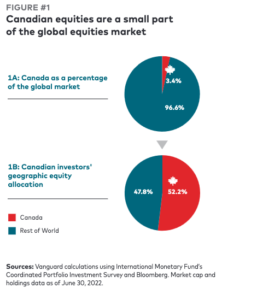By Devin Partida
Special to Financial Independence Hub
Scammers use various tactics to target victims’ financial data today, ranging from malware to fake giveaways.
People can protect themselves and their data online by understanding the risks at play.
Here are the top five bank account scams everyone should know about:
1. Phishing Emails and Texts
Phishing is one of the most common tactics scammers use to target victims’ bank accounts. Reported phishing attacks rose 61% in 2021, surpassing 1 million incidents worldwide. These attacks use deceptive messages to trick victims into giving away personal information, frequently including banking data.
Phishing messages most often come in the form of emails or texts. Scammers write the messages so they appear to be coming from a bank or credit card company. Usually, there is some urgent emergency in the phishing message that demands an immediate response from the victim. For instance, a phishing text might warn a victim that money was removed from their account.
This tactic aims to scare victims into panicking and responding to the message right away. Despite the urgency of messages like this, people must always contact their bank or credit card company directly to ask about the message before responding. This might take some time, but it ensures that phishing attacks fail to harvest sensitive banking information.
2. Online Shopping Scams
Online shopping scams are becoming more popular today, and they can be tricky to spot. These scams involve online stores collecting users’ bank account information in the background. They may or may not fulfill orders and can sell any kind of products. However, it is usually a sign that a store is a scam if an order is not fulfilled.
Online shopping scams often feature very cheap products. If something looks like a good deal, unsuspecting victims are more likely to fall for the scam. The store website may function smoothly and look like any other shopping website. A lack of customer service is a key giveaway that a store is probably a scam.
3. Fake Fraud Alerts
Fake fraud alerts are a specific type of phishing scam that leverages victims’ preexisting fear of data and identity theft. These dangerous fake messages are disguised as fraud alerts and may even specify the victim’s bank or credit card company.
A great example is the “account takeover” scam, which takes over a victim’s account by getting them to respond to a fraudulent account takeover alert. Like a self-fulfilling prophecy, once the victim responds to the fake message, they give the scammer the data they need to take over the victim’s account.
Luckily, there are a few ways to spot this kind of scam. If the message asks the victim to share personal information, it is most likely fraudulent. No bank or credit card company will request personal information via email, text or unsolicited calls.
Victims of this type of scam should check their bank or credit card activity directly, as well. Checking will usually reveal that no one withdrew money or accessed their account without permission.
4. Award, Prize, Giveaway and Lottery Scams
One type of bank account scam on the rise is fake awards, prizes, giveaways and lottery announcements. These scams often appear as emails and text messages but can also pop up as ads online. For example, YouTuber MrBeast has warned fans of a widespread scam impersonating him and claiming to give away free money.
This type of scam will usually ask victims to pay a “shipping” or “processing” fee or request bank details for transferring the prize money. After the victim gives this information or makes a payment, they never hear from the scammer again and don’t get any prize or money. Continue Reading…









